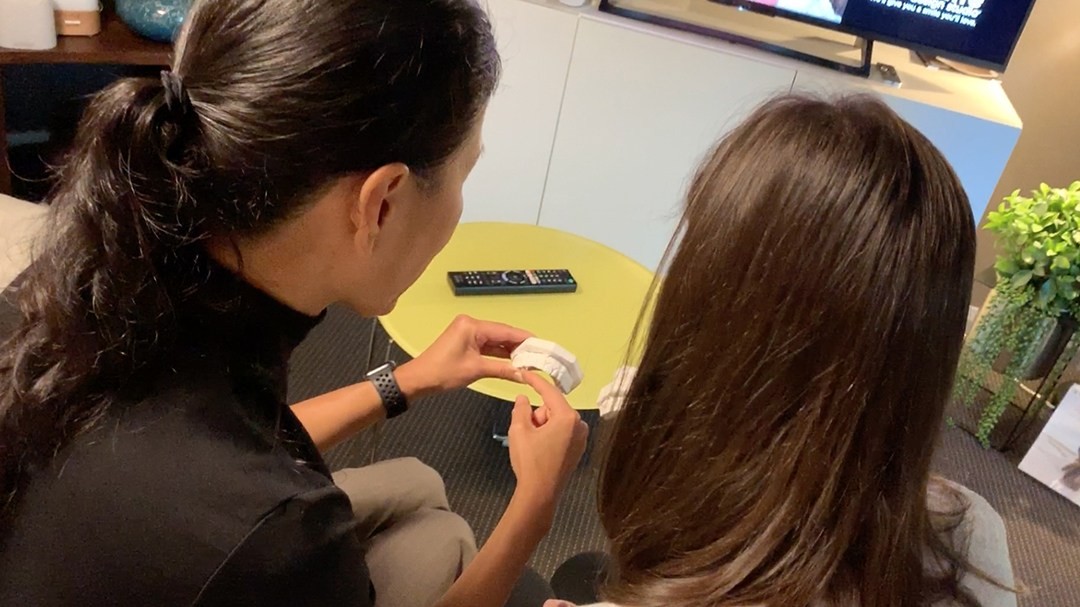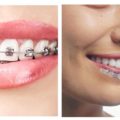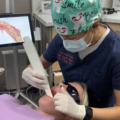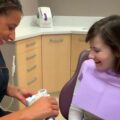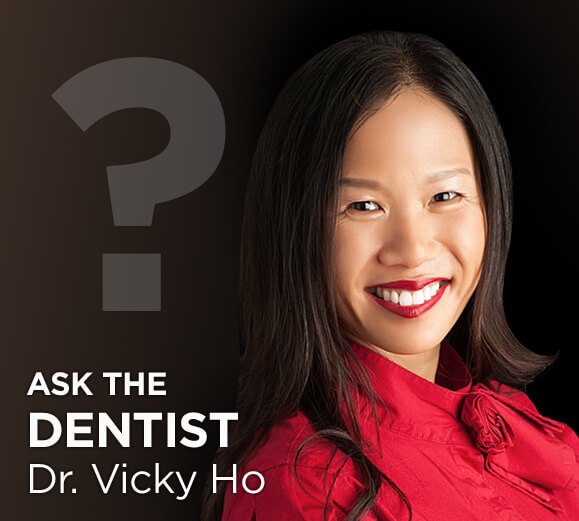Do you find yourself hiding your smile in photos because of the overcrowding of your teeth? Are you tired of feeling embarrassed by how your mouth looks and feel like there’s nothing that can be done about it? Well, if so then orthodontic treatment may just be the answer for you! Orthodontic practice is a special branch of dentistry which focuses on correcting misaligned teeth and jaw alignment. Hundreds of millions of people around the world get corrective treatment from an orthodontist every year. In this article we’ll explore why orthodontic treatments are beneficial for crowded teeth.
At its core, orthodontic treatment does more than just fix cosmetic issues; it helps improve oral health and dental hygiene as well. By realigning crooked or overlapping teeth, patients experience less cavities since food particles don’t get stuck between them anymore. Correct alignment of teeth also allow easier access when brushing and flossing, leading to healthier gums overall. So if you’re looking for an effective solution to fix overcrowded teeth and achieve a brighter smile at the same time – orthodontic treatment may just be exactly what you need!
What Is Tooth Crowding?
Tooth crowding (or “malocclusion of teeth”) is a common dental issue that affects many people. It can occur when there are too many teeth in the jaw and not enough space for them to fit correctly. This often happens due to the eruption of a wisdom tooth (or wisdom teeth), misalignment of permanent teeth, or because of other genetic factors.
As a result, some teeth become misaligned, crooked, or overlapping. Tooth crowding can lead to difficulty brushing and flossing around all the teeth and cause cavities, gum disease, bad breath, and other oral health issues.
Orthodontic treatment is an effective way to treat tooth crowding. Through functional treatments such as braces or aligners, orthodontists are able to move the teeth into their proper positions so they don’t overlap or become misaligned. Not only does this improve your smile aesthetically but it also makes it easier to clean each tooth properly which helps prevent decay and periodontal diseases like gingivitis.
Treating dental crowding with orthodontics has numerous benefits that go beyond just aesthetics. If left untreated, overcrowded teeth could lead to further problems down the road so taking action now can save you from more costly procedures later on. With the help of an experienced orthodontist at Smile Design Studio, you can get your perfect smile without having to worry about any future complications!
Causes Of Overcrowded Teeth
Crowded teeth can be caused by a variety of factors, from genetics and jaw size to tooth shapes. Fortunately, orthodontic treatment is available for those who are struggling with overcrowding issues. Here’s what you need to know about the causes of overcrowded teeth:
- Genetics – Genetic makeup plays an important role in how crowded or crooked one’s teeth may become. People whose parents have experienced crowding problems likely will too.
- Jaw Size – Having too small of a jaw can lead to overcrowding due to lack of space needed for all the teeth in the dental arches. If this problem runs in the family, it is best that individuals see a dentist early on so they can get fitted for braces if necessary.
- Tooth Shapes – Crowded teeth can also result from having pointed or wide front teeth that take up more than their fair share of room, leaving other teeth with no choice but to overlap each other as they try and fit into the limited space provided by your mouth.
- Missing Teeth – When there are missing permanent adult molars, adjacent teeth have nothing to stop them from shifting toward the empty area resulting in over-crowding. Orthodontic treatment may be able to help replace any gaps left behind by lost adult molars.
- Poor Oral Hygiene– Not taking care of your oral health can cause gum disease which leads to loose and eventually missing teeth, leading again to overcrowding problems which could necessitate orthodontic treatment down the road.
It’s essential for people who think they may suffer from crowding issues understand its underlying causes and potential treatments such as orthodontics before making decisions about how they want move forward with dental care solutions.
Treatment Options For Dental Crowding
Dental crowding can cause crooked teeth, unsightly gaps and other issues with one’s smile. Fortunately, orthodontic treatment offers a variety of solutions for addressing severe dental crowding.
The first step in any orthodontic treatment is the development of an effective treatment plan that takes into account all aspects of the patient’s situation. During this process, the dentist will take x-rays to determine if there are overcrowded teeth or impacted teeth that need special attention. The dentist may also recommend extractions if necessary to make room for existing teeth and create optimal alignment.
| Treatment Options | Description |
| Traditional Braces | Traditional metal braces use brackets attached to each tooth along with archwires to move them into place over time. |
| Clear Aligners | Clear aligners work by gradually shifting your teeth into their desired positions using plastic trays specifically designed for you based on impressions taken at the beginning of your treatment. |
| Palatal Expanders (RPE) | This appliance widens the upper jaw by gently separating the two halves of it through slow expansion and is typically used when correcting severe cases of dental crowding. |
After deciding on a course of action, a Smile Design Studio orthodontist will explain what treatments they’ll be doing, how long they expect it will take and answer any questions you might have about specific procedures or options related to treating your crowded teeth. With dedicated care and proper treatment planning, orthodontic treatment can help correct even severe dental crowding — giving patients back their confident smiles!
Growth Modification Appliances
Growth modification appliances are a treatment option for children with moderate crowding, and they can be used to provide long-term results. This type of orthodontic appliance helps guide the craniofacial growth in children or adolescents as their facial bones continue to develop. An adjustment is made when there’s too much pressure on teeth due to overcrowding, then the appliance works by directing the growth so that all teeth fit comfortably within the arch.
The use of these appliances also lessens any need for tooth extractions down the line. The device allows continued growth without putting extra strain on certain teeth which may otherwise become crowded again if not treated properly during development. As an added benefit, this particular form of orthodontics typically requires fewer visits than traditional braces, resulting in more convenience for busy families.
This method of treating mild overcrowding often offers better outcomes than simply waiting until adulthood for traditional braces because it prevents further issues from occurring throughout development.
Braces – A Shot Guide To Different Types
Dental braces are a type of orthodontic treatment used to treat crowded teeth. Dental braces work by applying continuous pressure over time, which helps the teeth move into their desired positions. There are several types of braces available, each providing different levels of comfort and effectiveness.
Traditional metal braces consist of brackets that are bonded onto each tooth with an adhesive and connected together using wires or elastic bands. This type of brace is typically more visible than other types but provide the most control over tooth movement.
Ceramic braces are similar in design to traditional metal braces, however they use clear or colored brackets instead for a less noticeable appearance.
Lingual braces on the other hand attach directly to the backside of your teeth so that they’re not visible from the outside.
Self-ligating braces have clips rather than elastics which help make them easier to adjust and therefore reduce discomfort during adjustments.
No matter what type you choose, orthodontic treatment can be life changing! With regular visits and proper care at home, you’ll soon be smiling confidently knowing that you’ve made an investment in yourself that will last a lifetime.
Invisalign For Teeth Crowding
Invisible aligner treatments such as Invisalign can provide a solution to your crowded teeth and improve your overall oral health. With Invisalign, we can customize a plan that’s specifically tailored to meet your needs. Here are some benefits of undergoing an Invisalign treatment:
-Mild Crowding: Moderate dental crowding is easily addressed by using clear aligners instead of traditional braces which often require extensive adjustments.
-Crowding By Extraction: If necessary, tooth extraction can be used in conjunction with Invisalign to help correct more severe cases of overcrowding.
-Invisalign: The use of removable trays makes it easy to move around without worrying about having bulky metal brackets on your teeth. Plus, they are very comfortable to wear and easy to take out when needed.
-Discreet Treatment: As opposed to conventional braces, Invisalign provides a discreet form of treatment so nobody will know you’re wearing them unless you tell them!
-Precise Results: Invisalign also offers precision results as compared to other forms of orthodontics due to its ability to control the rate at which teeth move into place over time. That way, you get the perfect smile you want without any surprises along the way!
These advantages make it easier than ever before for those suffering from mild or moderate levels of overcrowded teeth to receive the best possible care available today. So don’t let overcrowded teeth keep you from experiencing a healthier and more confident smile – contact Smile Design Studio for Invisalign treatment today!
How Long Do Orthodontic Treatments For Teeth Crowding Take?
The length of orthodontic treatment for teeth crowding depends upon the specific situation. Generally, it takes approximately one to three years for permanent teeth to be moved into their desired position through braces or other orthodontic treatments. However, some cases may take as little as six months while others might require up to five years of treatment.
In addition, there are certain factors that contribute to the amount of time needed for successful completion of an orthodontic treatment plan such as age, health condition, severity of misalignment, compliance with appointments and instructions given by the doctor, etc. All these aspects must be taken into consideration when determining exact treatment time for individual cases.
Frequently Asked Questions
How Much Does Orthodontic Treatment Cost?
When it comes to orthodontic treatment, one of the most common questions asked is ‘How much does it cost?‘ In order to answer this question accurately, numerous factors must be taken into consideration.
The type and amount of dental work needed can greatly influence the price tag on an orthodontic procedure. For instance, if a patient only needs braces for a few teeth or just requires minor adjustments, the costs could be lower than those associated with more extensive treatments for severe crowding such as jaw surgery or full-mouth reconstruction. Additionally, depending on what materials are used in the process (e.g., metal vs ceramic braces), prices may vary accordingly.
Are There Age Restrictions For Orthodontic Treatment?
Are there age restrictions for orthodontic treatment? It’s an important question to consider when researching potential treatments. Generally speaking, it is recommended that children visit the dentist from a young age and no later than seven years old in order to check for any developing issues with their baby teeth. Orthodontics can be used on both adults and children alike; however, the age of the patient will determine what kind of treatment plan is best suited for them.
For example, younger patients are more likely to benefit from traditional braces as they have time to adjust and adapt to wearing them over extended periods without too much discomfort or interruption to daily life. For adult patients, clear aligners may be more suitable as these can be removed during eating or brushing your teeth making it easier to maintain good oral hygiene habits while undergoing treatment.
No matter the age of the patient, consulting with an experienced orthodontist should always be done before starting any type of dental treatment. An experienced professional will assess each individual case carefully before recommending a course of action so you can make sure you’re getting the right advice tailored specifically for you. With this knowledge at hand, you’ll be able to make informed decisions about whether orthodontic treatment is right for you or your family member regardless of age.
Are Orthodontic Treatments Painful?
Are orthodontic treatments painful? Some people may find the initial fitting of braces uncomfortable, but once they’re in place there should be no discomfort. The amount of pain experienced during treatment varies from person to person and depends on how much pressure is needed to move teeth into position. In some cases, tightening of the braces can cause mild soreness in the mouth for a few days afterward.
In general however, the majority of patients report little or no pain throughout their treatment process. Many modern techniques are designed specifically with comfort in mind, such as self-ligating brackets that require fewer adjustments than traditional brackets. Likewise, clear aligners used for Invisalign® treatment are virtually invisible and custom fit to your mouth so you don’t experience any discomfort when wearing them.
Your orthodontist will also use specialized tools like waxes and elastics to minimize irritation from your braces or aligners if necessary — all part of providing comfortable care while achieving spectacular results! Orthodontic treatments offer many benefits far beyond just straightening teeth; it’s important to ask questions about possible side effects so that you can make an informed decision about what course of action best suits your needs.
What Are The Risks And Side Effects Of Orthodontic Treatments?
When it comes to orthodontic treatments, many people worry about the risks and side effects. It’s important to understand that not all treatment options are equal in terms of potential risks or complications. While there can be some discomfort associated with certain types of treatments, they should be minor and temporary.
The most common risk associated with any type of orthodontic treatment is tooth decay. This occurs when bacteria accumulate around the braces or wires used in the treatment. To minimize this risk, it’s essential for patients to maintain good oral habits and oral hygiene by brushing and flossing regularly throughout their treatment period. Additionally, regular visits to a dentist at Smile Design Studio during orthodontic care will help ensure teeth stay healthy and free from cavities.
Are Orthodontic Treatments Permanent?
Are orthodontic treatments permanent? In general, the answer is yes. The majority of treatments are designed to be long-term solutions, although some may require minor adjustments over time. Orthodontic treatment can involve a variety of techniques and types of braces that all have different effects on the teeth.
The type of orthodontic treatment chosen will affect how long it lasts for. Traditional metal braces treatments tend to last longer than other forms because they’re more reliable and less likely to break or need adjustments later down the line. On the other hand, clear ceramic braces are often used as a short-term solution since they aren’t quite as durable as metal ones.
No matter what kind of orthodontic treatment you choose, there is usually an ongoing maintenance plan after the initial process is completed. This involves regular visits to your dentist so they can check up on your progress and make any necessary adjustments if needed. Ultimately, making sure you keep up with these appointments helps ensure that your orthodontic treatment remains effective long term.
Conclusion
If your teeth have become crowded due to genetics or other dental complications, then orthodontic treatment might just be right for you! Contact Smile Design Studio today to find out more about our treatments.

